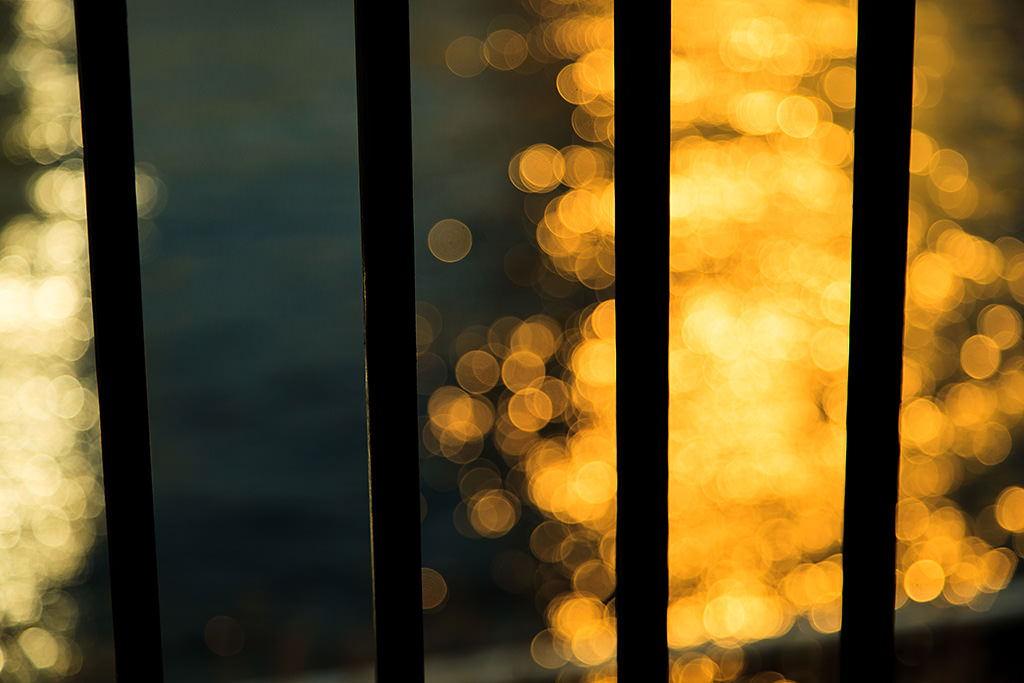Lens FAQ #8: Where Should I Focus On to Capture Beautiful Bokeh Circles?
Capturing beautiful bokeh circles is one of the photography techniques that I would recommend trying. Once you have mastered the trick to creating them, you’ll be able to capture such photos effortlessly. Here, I will explain bokeh circles are formed as well as a few tips to capturing them. (Reported by: Kazuo Nakahara)

Bright point light sources are the secret to bokeh circles
Bokeh circles are formed when you create a large blur of a bright point light source, and are actually no different from normal bokeh. Therefore, all you need to do to capture bokeh circles is find a bright point light source and create a large blur. (Check out our article for 4 easy tips on how to do so!)
Typical examples of bright point light sources are street lights and illumination, which are artificial lights that stand out in night scenes. However, even during the day, the sunlight reflected off the water's surface or leaves, and the bright sky visible through the gaps in branches and leaves of trees, can also be ‘sparkle spots’—sources for bokeh circles. You can look for a backlit location to make it easier to capture reflected sunlight, and also find such light sources in the cracks between trees even on cloudy days. Hence, if you take some time to look around, you’ll find that it is possible to create bokeh circles under any conditions, whether in cloudy conditions, in the day, or at night.
A good way to create a large blur is to use a bright prime lens or telephoto lens with a full frame camera. Also, by keeping your main subject as far as possible from the source of the bokeh circles—in this case, the point light sources—for your shoot, the larger the bokeh circles you can obtain. Furthermore, if you shoot with a narrow aperture, the bokeh circles will appear small, or will have an irregular shape due to the shape of the aperture blades, so it is important to shoot at maximum aperture.
SCENE 1: Illuminations

EOS 5D Mark III/ FL: 70mm/ Aperture Priority AE (f/4, 1/25 sec, EV+0.3)/ ISO 250/ WB: Daylight
Illuminations are one of the easiest point light sources to use for creating bokeh circles. I set the aperture to f/4, came right up close to the illumination in the foreground such that it was nearly touching my lens glass, and then defocused to create large bokeh circles.
SCENE 2: Sunbeams streaming through leaves

EOS 5D Mark III/ FL: 200mm/ Aperture Priority AE (f/2.8, 1/640 sec., EV +0.3)/ ISO 400/ WB: 4,500K
A forest is also a treasure trove of point light sources. The bokeh circles you can see are from the sunlight of the bright sky streaming through the leaves. Here I was able to create bokeh circles by defocusing at a maximum aperture of f/2.8.
Here’s a more in-depth article on how to achieve bokeh circles in scenes similar to this.
SCENE 3: Reflections on water surface

EOS 5D Mark II/ FL: 80mm/ Aperture Priority AE (f/4, 1/2,000 sec, EV-0.7)/ ISO 200/ WB: Cloudy
I took a shot of a sparkling river surface at sunset. I created a large blur in the background by focusing on the fence in the foreground. This resulted in a fantasy-like image of the numerous bokeh circles extending across the surface of the river.
Column: What is “circular aperture” and how does it affect the shape of bokeh?
Many of the latest lenses are designed so that the aperture blades form a round shape, which is referred to as circular aperture. Its advantages include maintaining the roundness of bokeh circles even when you narrow the aperture, and being less susceptible to leaving other forms of bokeh looking unnatural.
When using lenses that do not have a circular aperture (i.e., many older lens models), the aperture blades form a polygonal shape. When you blur point light sources with such a lens, the bokeh will also appear polygonal in shape, making it difficult to create perfectly round bokeh circles. The specifications table of each lens will likely include whether it has a circular aperture, so be sure to check before buying.
Circular aperture

The shape of the aperture blades is designed so that the hole of the aperture is round. The round shape is maintained even when the aperture is made narrower.
Non-circular aperture

The intersecting points of the aperture blades are angular, so the aperture hole is a polygonal shape.

Kazuo Nakahara
Born in Hokkaido in 1982, Nakahara turned to photography after working at a chemical manufacturing company. He majored in photography at the Vantan Design Institute and is a lecturer for photography workshops and seminars, in addition to working in commercial photography. He is also a representative of the photography information website studio9.

Digital Camera Magazine
A monthly magazine that believes that enjoyment of photography will increase the more one learns about camera functions. It delivers news on the latest cameras and features and regularly introduces various photography techniques.
Published by Impress Corporation

































